Discover the Xiaomi 14T, featuring a powerful camera, advanced AI, stunning display, and solid performance for an exceptional smartphone experience.
The post Xiaomi 14T: A New Era in Smartphone Photography first appeared on Trendy Gadget.
Discover the Xiaomi 14T, featuring a powerful camera, advanced AI, stunning display, and solid performance for an exceptional smartphone experience.
The post Xiaomi 14T: A New Era in Smartphone Photography first appeared on Trendy Gadget.

Dave Kindig and his team at Kindig-It Design have once again redefined custom car building with their latest creation, the 1953 Corvette “TwelveAir.” Recently crowned the Ridler Award winner at the 2024 Detroit Autorama, this Corvette is more than a reimagination—it’s a ground-up custom build that transforms a classic icon using modern design and cutting-edge technology. Every detail, from the engine bay to the leather-wrapped interior, reflects a perfect balance of craftsmanship and innovation.
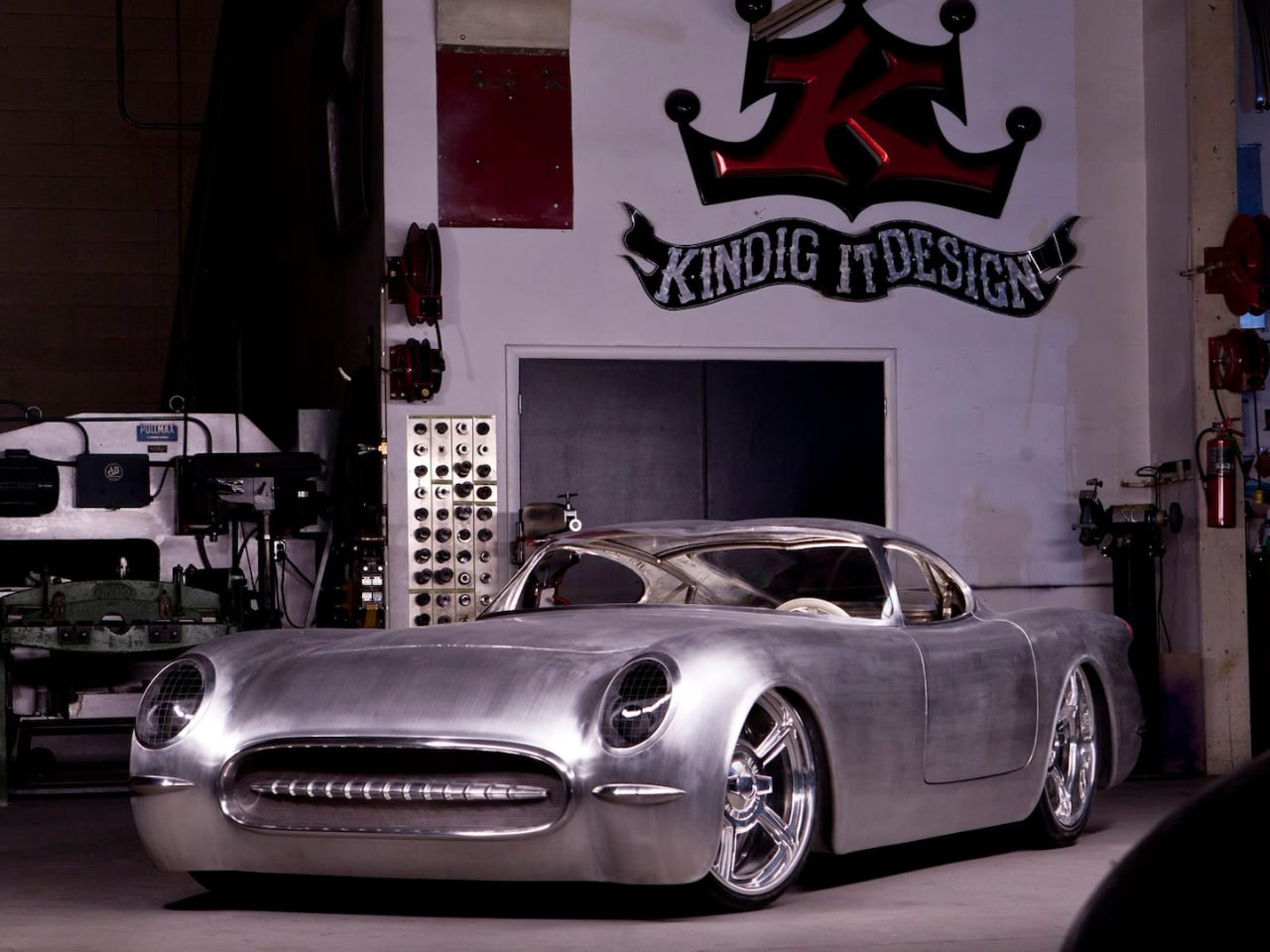
Designer: Dave Kindig + Kindig-It Design

At first glance, the TwelveAir may evoke memories of the iconic 1953 Corvette, but no original parts from that car were used. Kindig’s team built every inch of this vehicle by hand or fabricated it specifically for this project. Beginning with hand-drawn sketches and quickly moving into CAD modeling, the car’s design took shape with precision and a creative vision.
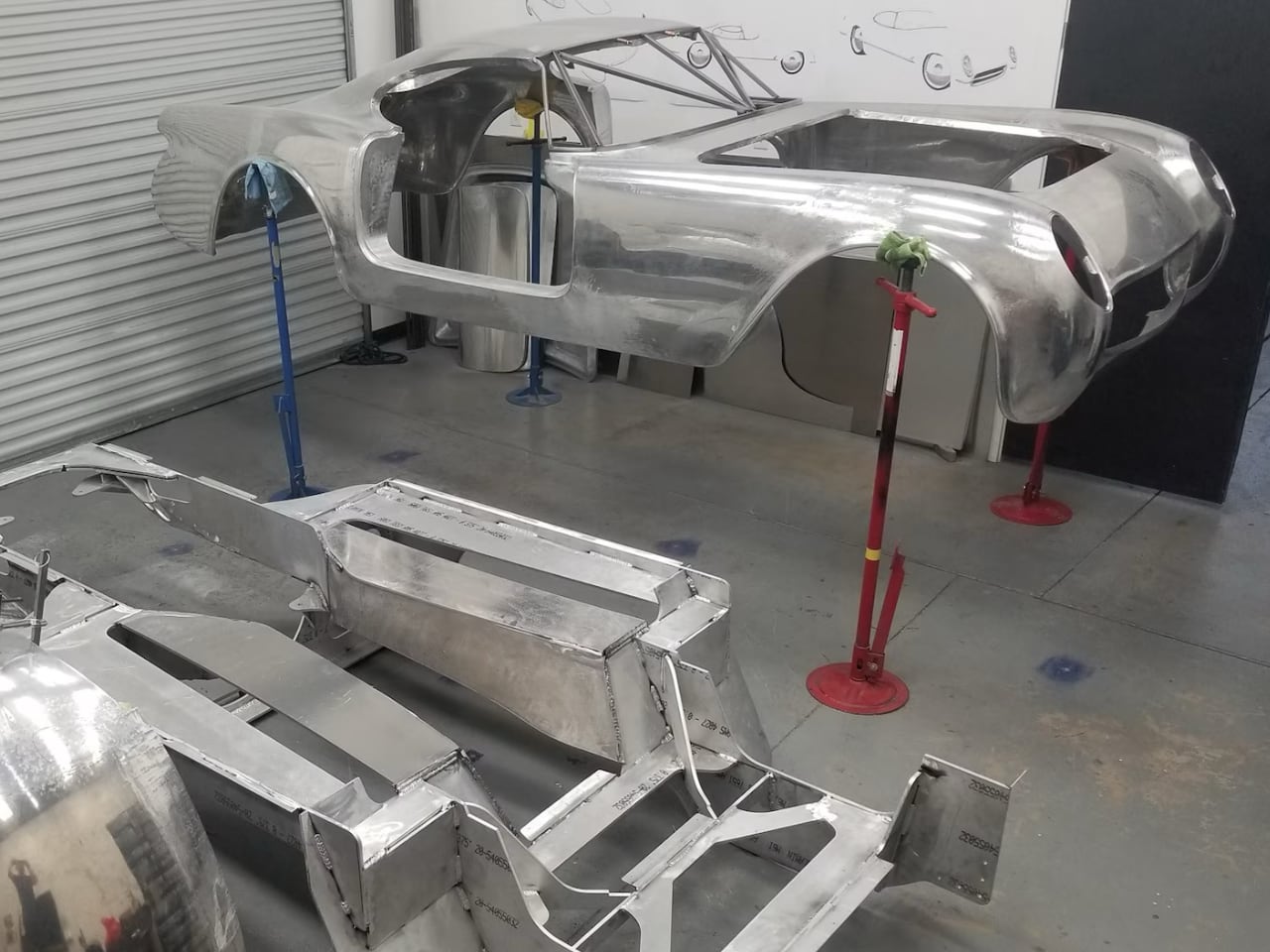
What makes this build even more remarkable is the five-year process during which Kindig’s team kept everything hidden from view. They built a special room around their CNC machines to maintain secrecy, ensuring no one saw the car before its debut at the Autorama.
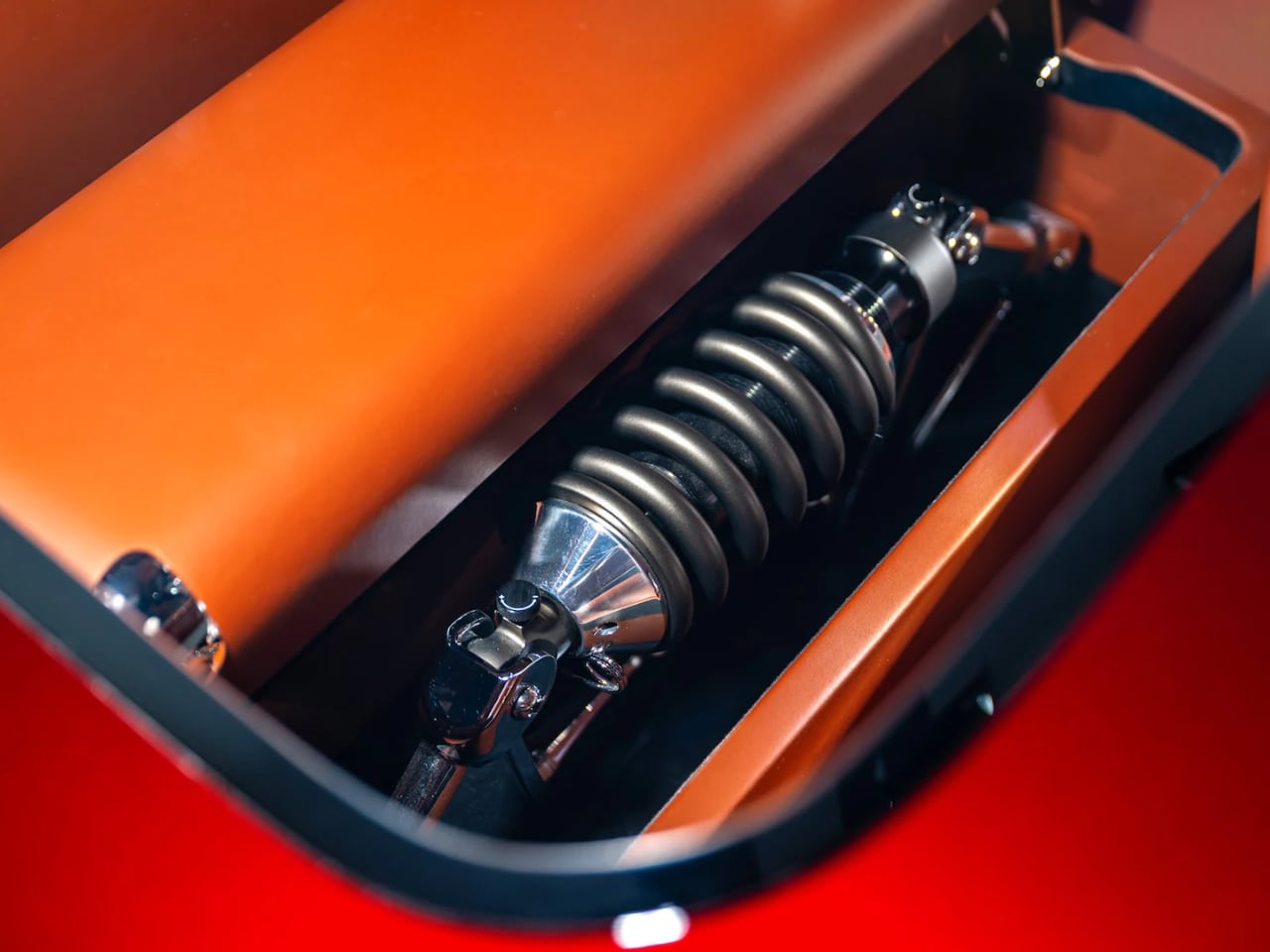
The car was constructed from scratch, including the suspension system and the engine bay—two areas where performance and design came together perfectly. The hand-formed aluminum body nods to the past, while modern tools like CAD and 3D printing allowed the team to experiment and refine every element before finalizing the build. In doing so, the TwelveAir became an utterly bespoke creation designed to push the boundaries of custom automotive engineering.
The TwelveAir’s striking design is a product of traditional craftsmanship and technological innovation. CAD software and 3D printing allowed Kindig’s team to prototype critical parts like the engine components and suspension arms before they moved into final fabrication. These tools made testing for fit and function easier, reducing wasted materials and allowing more time to focus on the car’s performance and aesthetics.
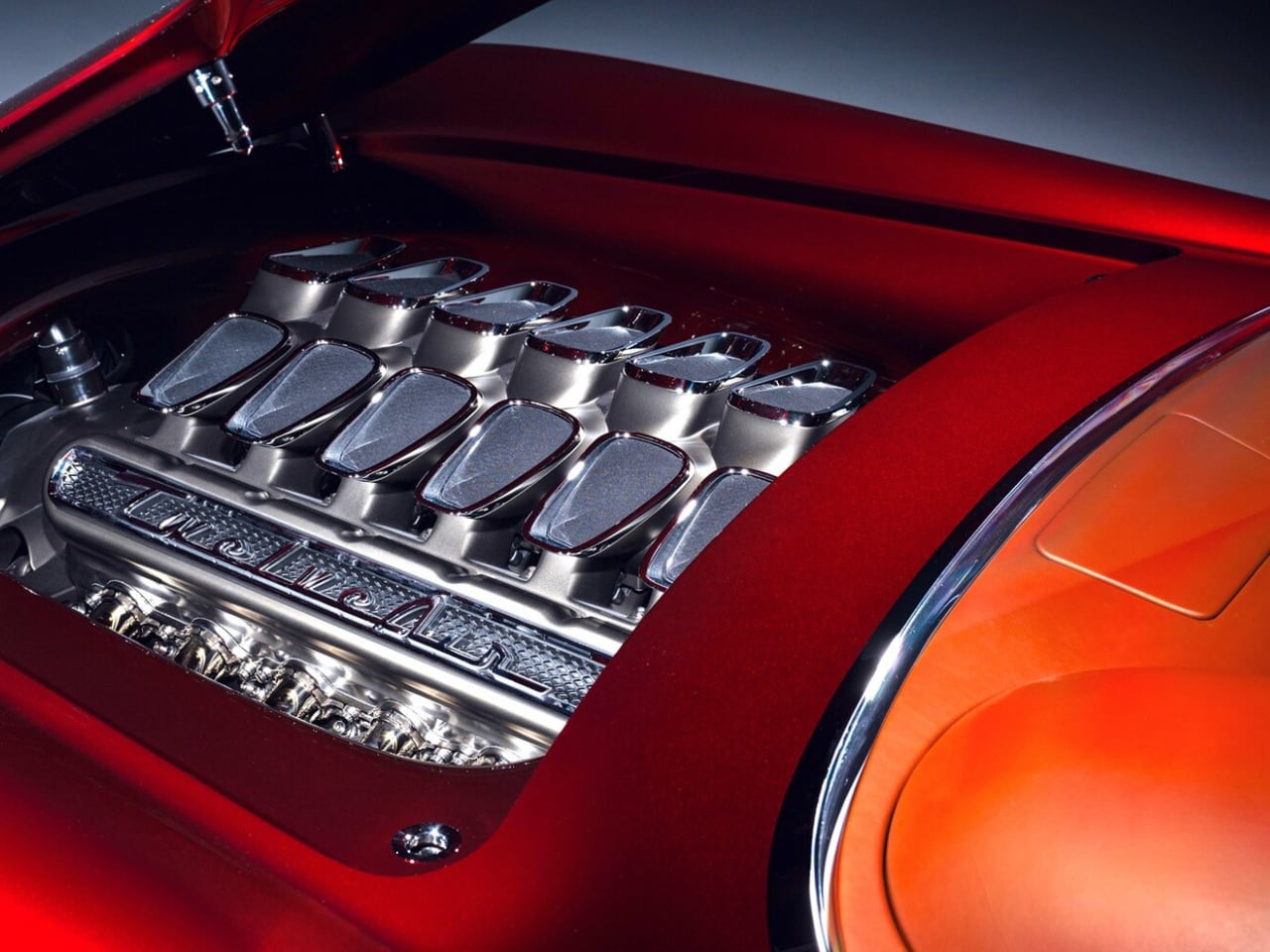
Take the engine bay, for example. The polished chrome engine covers, accented with sleek, scooped air intakes, form a visually stunning centerpiece. The engraved “TwelveAir” script on the engine block, combined with perfectly machined parts, reflects a level of precision only achievable through the blend of advanced tech and craftsmanship. The engine bay doesn’t overwhelm with excess—it strikes a balance between mechanical prowess and refined design, creating a lasting visual impact.
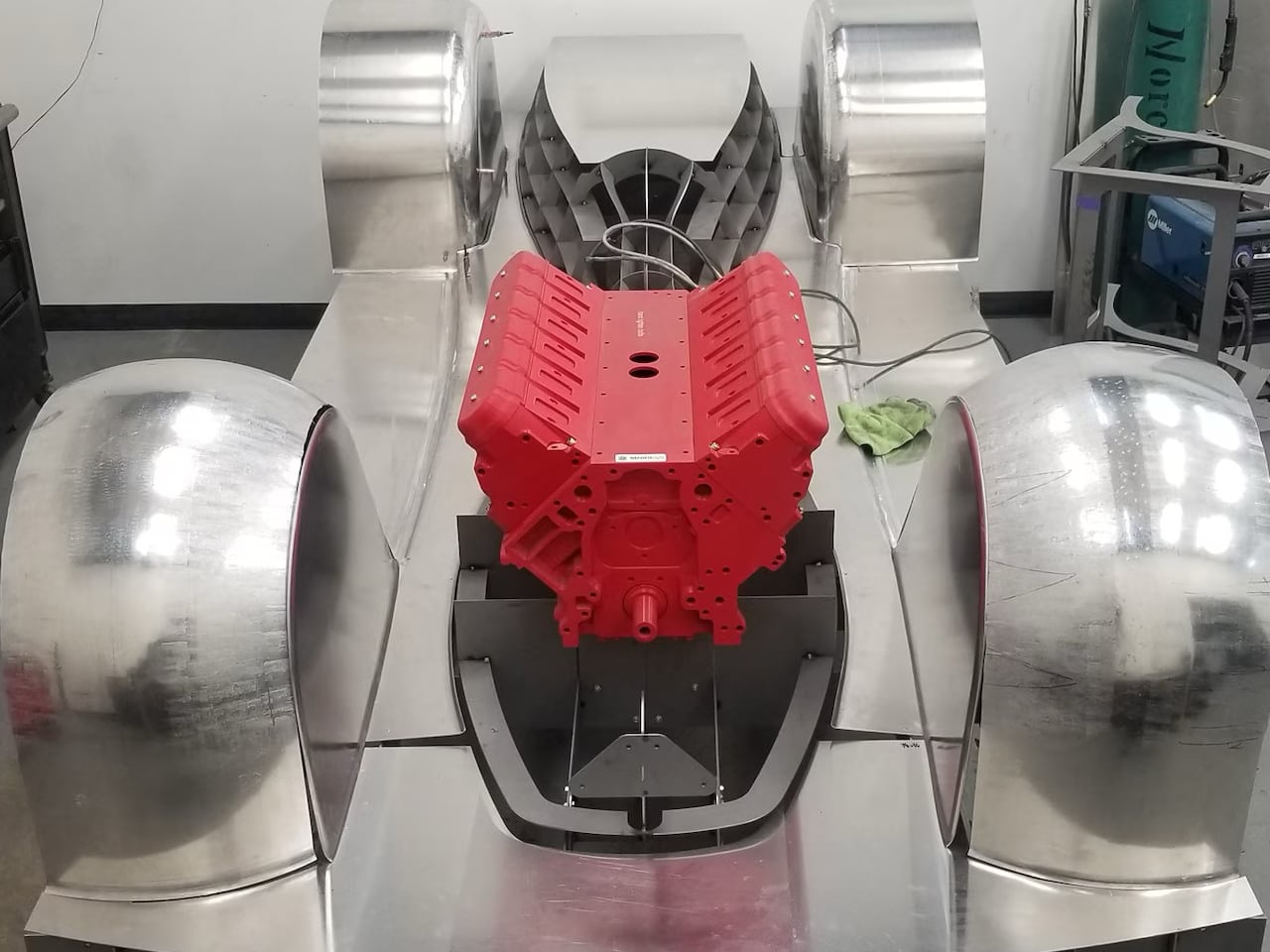
The suspension system is another perfect example of design merging with function. Inspired by the precision seen in Formula 1 and IndyCar designs, the suspension features a single horizontally mounted spring, which keeps the car’s stance low and aggressive while ensuring peak performance. The polished chrome suspension components hide beneath sleek, purpose-built panels, preserving the clean and minimal appearance while enhancing the car’s rigidity. This results in a visually appealing vehicle optimized for real-world performance.
The TwelveAir’s exterior grabs attention, but the engineering beneath the surface is just as impressive. Hidden within the car’s structure, the suspension system allows the bold body lines to remain uninterrupted. This design choice wasn’t merely about aesthetics—it also improves the car’s overall handling and strength, making it capable of harnessing the 650-horsepower V-12 engine.
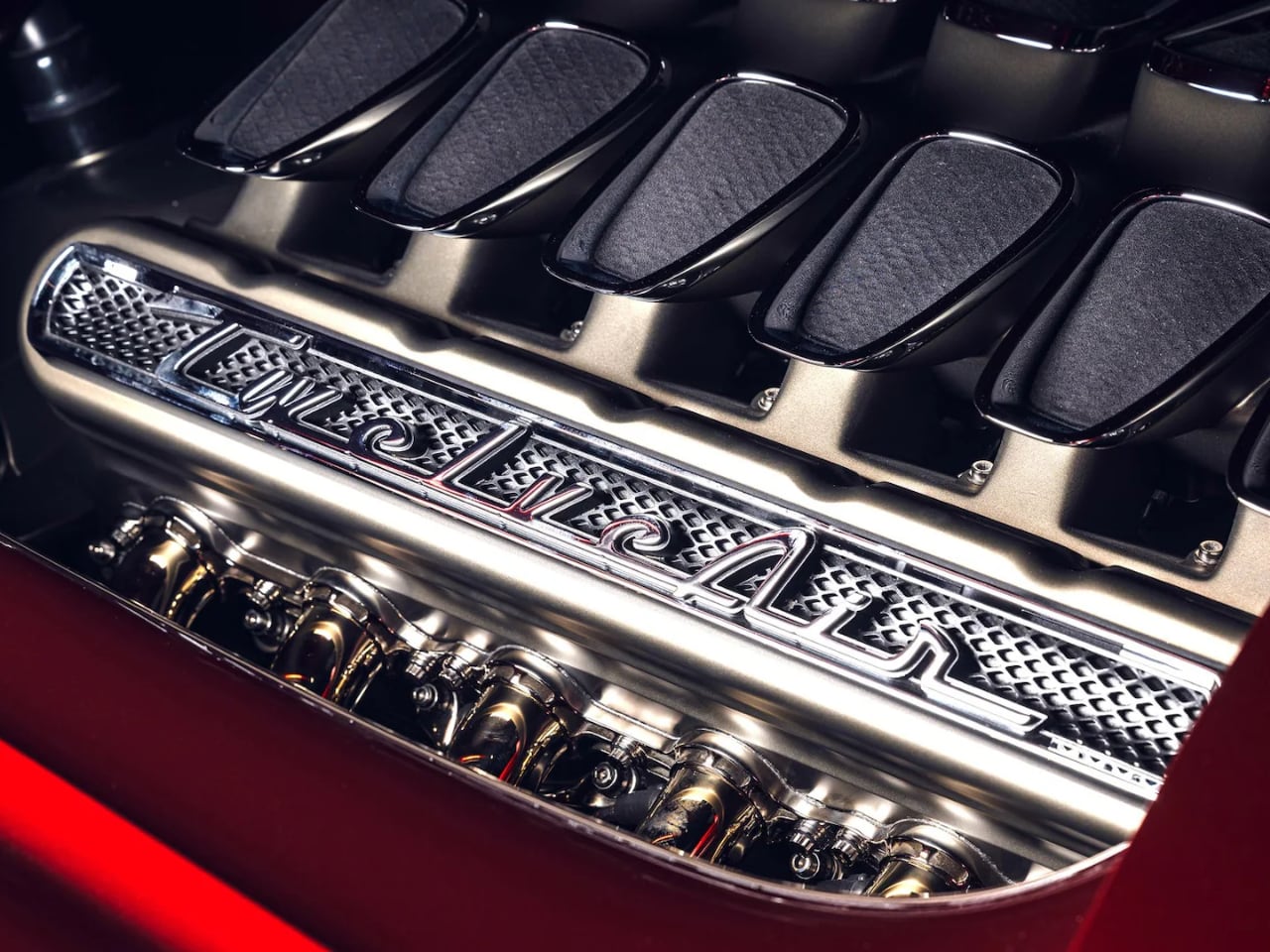
Speaking of the engine, it’s a V-12 LS-based powerhouse sourced from Race Cast Engineering. With 650 horsepower, it’s more than capable of delivering high performance, especially given the car’s lightweight aluminum body. What’s remarkable is how the engine’s visual presence complements the entire design. The sleek covers and exposed components don’t dominate the build but instead, harmonize with the car’s overall aesthetic. The “TwelveAir” logo engraved on the engine block acts as a subtle but effective nod to the car’s bespoke nature.
Each element in the car works in concert. The balance of performance and aesthetics is key. Everything from the engine placement to the suspension components reinforces this philosophy, ensuring the car goes beyond being a showpiece—this is a fully functional, high-performance machine.
Inside the TwelveAir, the attention to detail is even more apparent. The interior, wrapped in rich sienna-colored leather, exudes sophistication and craftsmanship. The thin-spoked steering wheel, accented by chrome, offers a perfect blend of retro influence and modern design. The dashboard maintains a clean, minimalistic layout with smooth curves, polished metal finishes, and understated dials that don’t distract from the car’s interior flow.
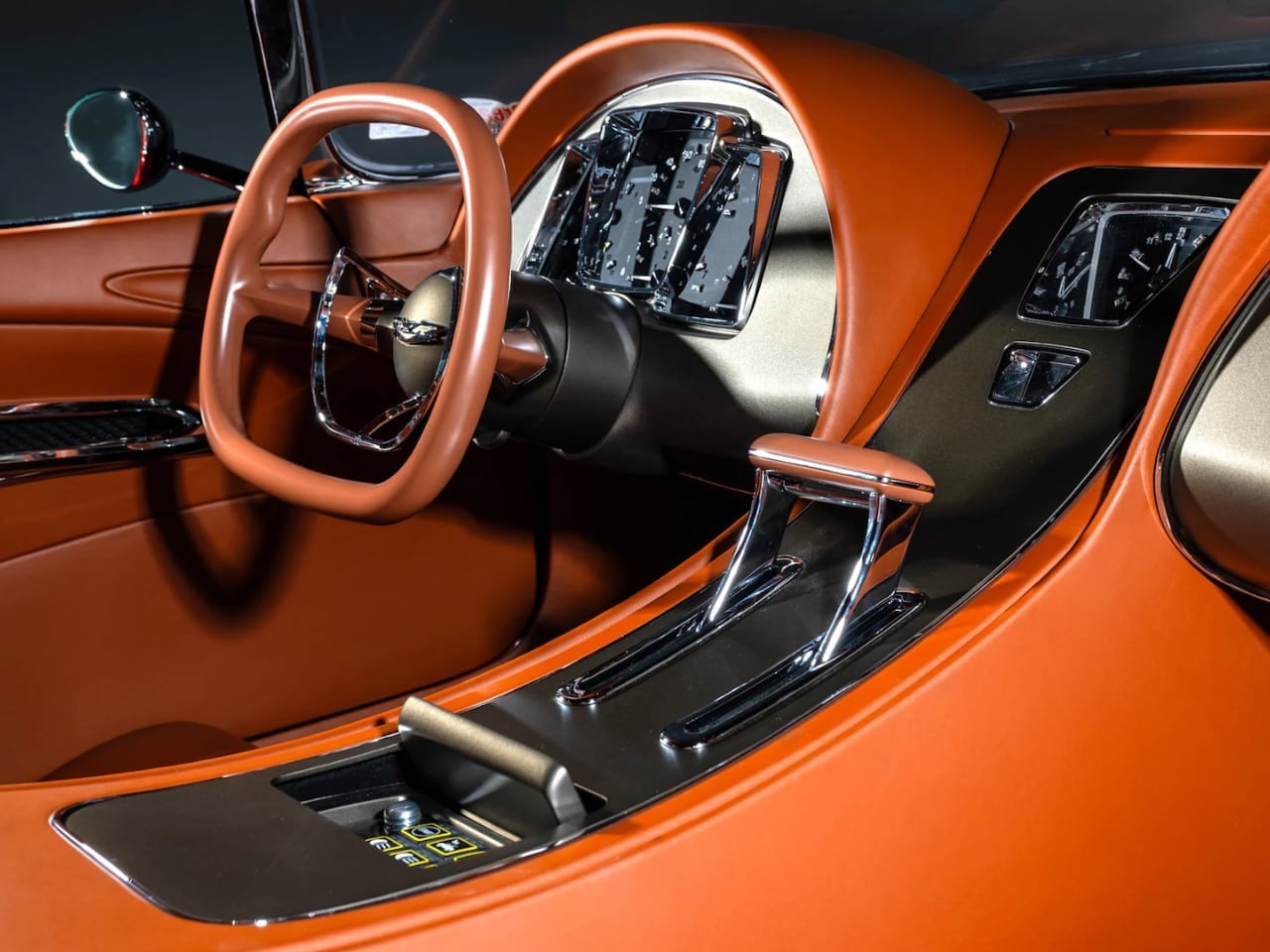
The chrome accents, carefully placed throughout the cabin, contrast beautifully with the soft leather, creating a tactile sense of luxury without overwhelming the senses. The balance between warmth and sharpness in the materials elevates the car’s design, making the interior feel futuristic and timeless.
The console and gear lever are simple, elegant, and integrated seamlessly into the overall design. Chrome touches along the gear shift area provide a subtle yet striking contrast against the leather. Every aspect of the interior has been designed with precision and thought, ensuring that form doesn’t overtake function.
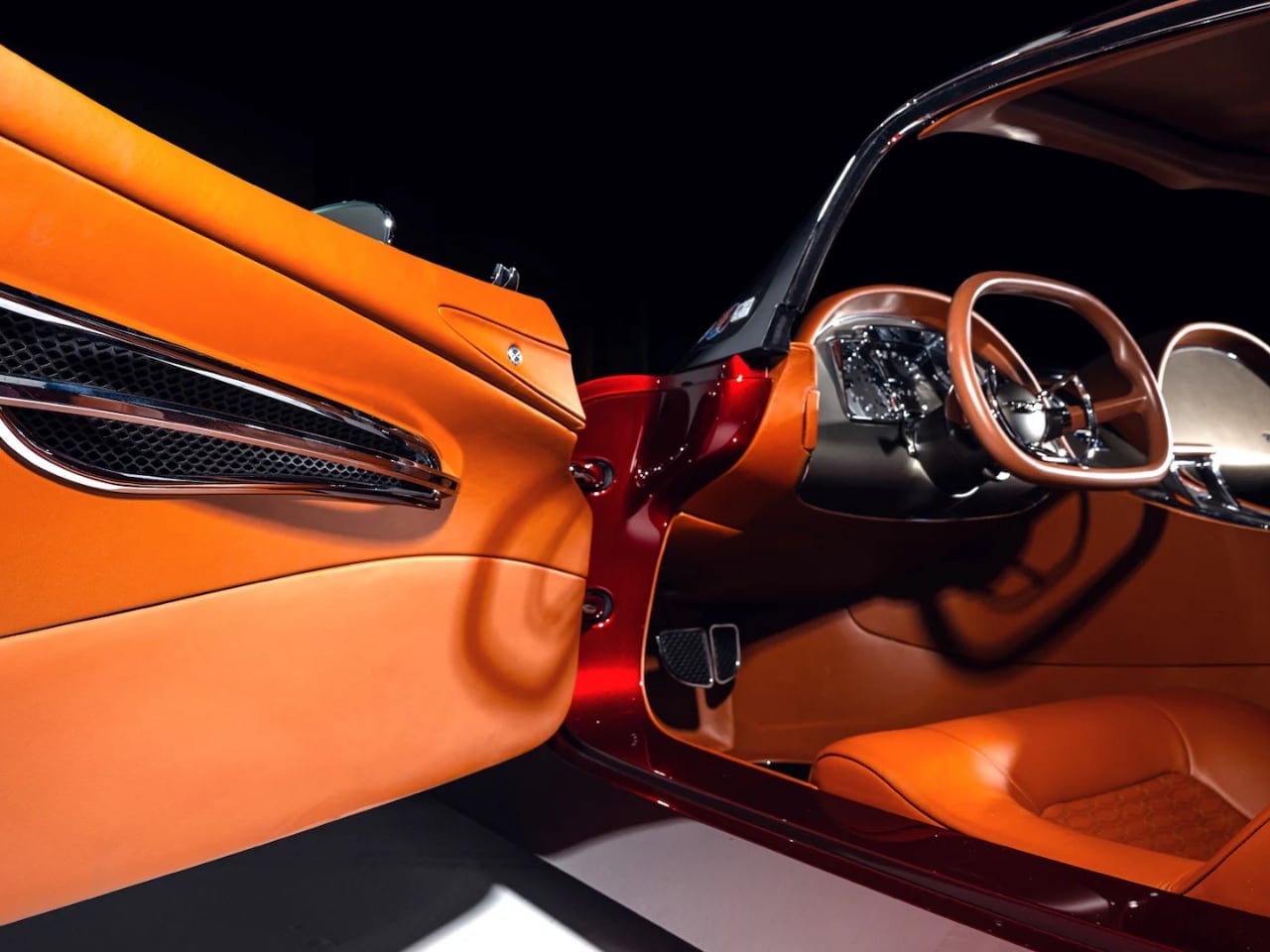
The door panels, with smooth orange leather seamlessly flowing from the exterior, showcase how carefully the designers considered every transition in the car. Even the most minor details, like the chrome trim on the door, are purposeful and consistent with the overall aesthetic. Everything from the color choices to the material feels bespoke and intentionally crafted.
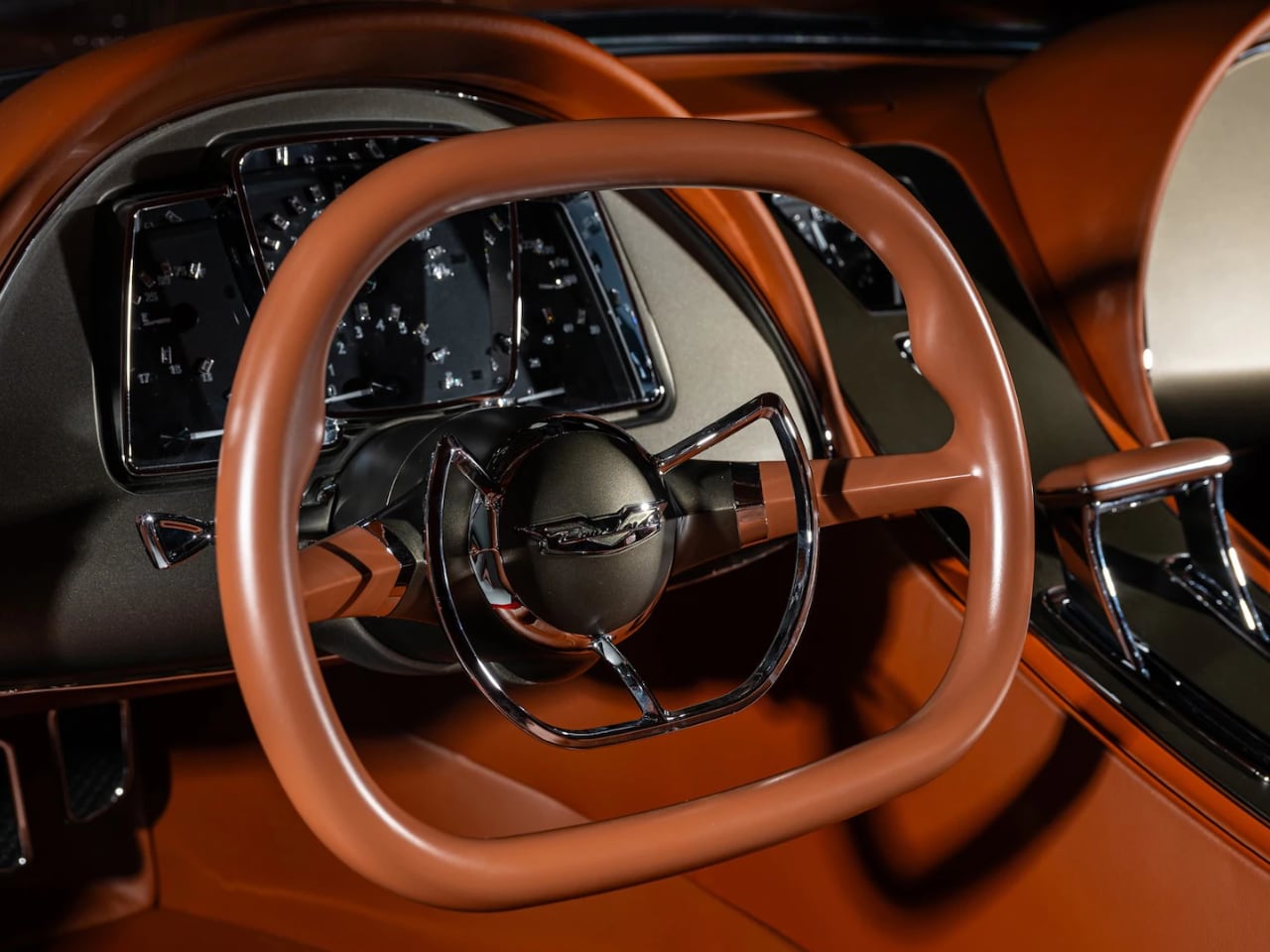
One of TwelveAir’s most striking features is its bold use of color. The deep metallic red of the exterior grabs attention instantly. The rich and reflective paint enhances the car’s dramatic shape, creating a sense of movement even when the car is stationary. Chrome accents break up the color, providing sharp contrasts that highlight the body’s sleek lines.

The interior’s orange leather feels both bold and luxurious. Its warmth contrasts sharply with the deep red exterior, creating a cohesive visual experience that flows naturally from outside to inside. The orange, rather than being overpowering, complements the modern design language, while the chrome details and high-polished finishes add refinement.
Dave Kindig’s 1953 Corvette “TwelveAir” represents a new level of what’s possible in custom car design. By integrating traditional craftsmanship with modern technology, Kindig has created a car that transforms the classic Corvette into something forward-thinking. Every inch of the TwelveAir reflects thoughtful design, precise engineering, and attention to detail that few custom builds achieve.

This car is a complete transformation, built from the ground up. Using tools like CAD modeling and 3D printing alongside traditional hand-forming techniques, Kindig shows how the future of custom cars blends artistry and technology. The TwelveAir sets a new standard for Corvettes and the entire custom car industry, perfectly balancing function and design.
With the TwelveAir, Kindig has crafted a vision of the future of automotive design. It’s a bold, beautiful, and groundbreaking example of what’s possible when you refuse to be limited by tradition.
The post How Dave Kindig’s 1953 Corvette ‘TwelveAir’ Sets a New Standard for Custom Car Design first appeared on Yanko Design.
ASUS's latest Zenbook S14, much like the Zenbook 14 OLED we reviewed last December, is a solid ultraportable with one major selling point: It's among the first laptops to use Intel's newest CPUs. In this case, it's the Core Ultra 7 258V, a processor that sits in the mid-range of the company's "Lunar Lake" lineup. While Intel touts these chips as its most efficient ever, I've been curious about what that means for raw performance, especially since they top out with just eight cores.
Based on my testing, I can confirm that the Zenbook S14 delivers the best battery life we've ever seen from an Intel laptop. It reached 16 hours and eight minutes in the PCMark 10 battery benchmark. In comparison, the Zenbook S16 powered by AMD's new Ryzen AI 9 365 chip only hit 12 hours and 47 minutes. The Intel system's timing is close to the 17 hours and 45 minutes we saw from the Dell XPS 13 Copilot+ , which is powered by Qualcomm’s Snapdragon X Elite.
While it's astounding to see how much progress Intel has made with battery life, that does come with some compromises. In a few benchmarks, the Zenbook S14 doesn't score much higher than Intel's last-gen Core Ultra chips, and it's often bested by AMD's Ryzen AI on multithreaded tasks. But, as we often say, benchmarks don't tell the entire story.
When I reviewed the Zenbook 14 OLED a year ago, I couldn't help but point out how dated it looked. It was practically the same as ASUS' laptops from a decade ago (albeit with slimmer screen bezels). Not so with the Zenbook S14. It's impressive the moment you open it up and feel its lid, which is built with a material ASUS calls "Ceraluminum." As the name implies, it's a combination of ceramic and aluminum, and it feels almost uncanny, like something between high-end plastic and smooth metal. It's still premium, but it's also distinctly different from most other laptops.
Combining ceramics and aluminum isn't exactly new — ASUS notes that it's a popular option for aerospace and watch designs — but we haven't yet seen it deployed in laptops. It's not just for looks, either. The material should also be more durable than standard metal. The rest of the Zenbook 14 S's body is made out of a solid block of metal, but ASUS added some unique tweaks there as well. The lower part of the case features a geometric grille above the keyboard, consisting of 2,715 circular cooling vents. ASUS claims this design enhances airflow while also keeping dirt and dust out.
ASUS 14-inch 3K "Lumina" OLED display dominates the Zenbook S14, and it delivers everything I want from a modern laptop screen. It sports a fast 120Hz refresh rate and 500 nits of peak brightness. While its bezels are relatively thin compared to older ASUS systems, they're still noticeably chunkier than Dell's latest InfinityEdge screens on the XPS 13 and 14. The system would look much sleeker if ASUS could shave off more of its bottom and side bezels. Most importantly, though, the OLED display looks glorious, with deliciously dark black levels and colors that pop off the screen.
The Zenbook S14 is surprisingly sturdy for a 14-inch laptop that weighs 2.65 pounds and measures 0.47 inches thin. It's slightly lighter and a hair thicker than the most recent 13-inch MacBook Air, and feels similarly polished. Notably, it also offers many more useful ports than Apple's ultraportable. The S14 includes two Thunderbolt 4 USB-C connections, a full-sized HDMI 2.1 port, a headphone jack and even an old-school USB Type-A port. The only thing it's missing is Ethernet and an SD card slot.
Unfortunately, ASUS couldn't get everything right with the Zenbook S14. Its quad-speaker audio system is serviceable, but the sound loses any sort of depth and detail as you ramp up the volume. And while it's nice to have a Windows Hello-compatible webcam for fast logins, the 1080p sensor looks far grainier and less detailed than Dell's XPS line and the MacBook Air.
Its keyboard also feels merely serviceable, with little responsive feedback while typing. That’s a particular shame, since that’s been a constant complaint we’ve had with ASUS keyboards. At least the touchpad is large and responsive to swipes and multi-finger gestures. You can also adjust the volume and other settings by sliding your finger along the sides of the touchpad.
Thanks to Intel's Core Ultra 7 258V chip, the Zenbook S14 felt impressively zippy from the start. I breezed through the Windows setup process, downloaded the latest updates and installed my usual testing programs in just a few minutes. It didn't sweat whenever I needed to jump between apps like Spotify, Slack and Evernote, and I didn't notice any of the lag I often see on Windows notebooks bogged down by third-party bloatware. It was always ready to get work done.
PCMark 10 | Geekbench 6 CPU | 3DMark Wildlife Extreme | Cinebench 2024 | |
ASUS Zenbook S14 (Intel Core Ultra 7 258V) | 6,688 (Base Test) 14,215 (Applications) | 2,569/10,442 | 7,158 | 121/482 |
Dell XPS 13 Copilot+ (Qualcomm Snapdragon X Elite) | 14,024 (Applications) | 2,621/14,194 | 6,191 | 122/748 |
Dell XPS 13 (Intel Core Ultra 7 155H, Intel Arc) | 6,806 (Base test) | 2,276/11,490 | 4,579 | 90/453 |
Apple MacBook Air (M3) | N/A | 3,190/12,102 | 8,310 | 141/490 |
In PCMark 10, the Zenbook S14 scored almost exactly the same as the Surface Laptop 7 for Business, which uses the last-gen Core Ultra 7 165H. It also matched the XPS 13 Copilot+ edition, which had a Snapdragon X Elite chip, in the PCMark 10 Applications benchmark. The Zenbook's multithreaded performance was noticeably worse than either of those machines in Geekbench 6, likely due to the reduced core count this generation.
The big selling point for Intel's Lunar Lake chips is their dramatically improved NPU (neural processing unit), which can reach up to 47 TOPS (trillions of operations per second) of AI performance. In comparison, the previous Core Ultra chips had a significantly less powerful 11 TOPS NPU, while AMD's new Ryzen AI chips reach up to 50 TOPS. (More powerful Lunar Lake chips can hit up to 48 TOPS.) Higher TOPS figures means Copilot+ PCs like the Zenbook S14 will be able to tackle demanding AI workloads more quickly, without impacting overall CPU performance.
Unfortunately, there still aren't a ton of AI features to test at the time of this review. Microsoft's Copilot+ Windows 11 update for Intel and AMD systems isn't arriving until November, and even that will only include a beta version of the controversial Recall feature. It's also hard to find apps that take advantage of a local NPU — most entries in the Windows Store "AI Hub" rely on cloud AI processing.
At least there's Audacity's OpenVino plugin, which Intel developed to show off its AI PC hardware. It offers NPU-powered features like noise suppression and transcription, but it also requires an involved setup process that may be confusing to Audacity novices. I was able to completely remove incessant jackhammering from a five-minute clip in one minute and eight seconds using the NPU alone. That's not very fast in the world of audio editing (CPU rendering can tackle a noise-filled 90 minute file in three minutes and thirty seconds), but what's key is that the NPU handles the same work using very little power. That could be important if you're stuck editing on battery in a plane or remote location.
I was also impressed by Intel's latest Arc 140V GPU, which let me play Halo Infinite between 35 fps and 45 fps in 1080p with low quality graphics settings. That's far from a smooth experience, but it's fascinating to see it from a built-in GPU. Intel's graphics also scored well above the Snapdragon X Elite across the board, especially in the Geekbench 6 GPU test.
ASUS launched the Zenbook S14 with a starting price of $1,500, but it’s already slightly discounted at Best Buy for $1,400. That configuration gets you a Core Ultra 7 chip, 16GB of RAM and a 1TB SSD. That’s not too shabby, considering the XPS 13 Copilot+ system with a Snapdragon X Elite costs $1,800 when equipped with 16GB of RAM, a 1TB SSD and an OLED display. The Zenbook also doesn’t have the compatibility issues inherent with Snapdragon systems, which have to emulate older Windows apps and can’t run many popular games at all.
As usual, ASUS also delivers far more value than Apple. A MacBook Air with 16GB of RAM and a 1TB SSD costs $1,700, and that’s also stuck with a 60Hz LCD screen.
The Zenbook S14 leans more on efficiency than raw power, but it’s still an incredible achievement for Intel, a company that used to be infamous for energy-devouring mobile chips. While the Lunar Lake chip’s NPU makes the Zenbook ready for Copilot+ and AI features, its true selling points are its excellent battery life, slick ASUS design and gorgeous OLED display.
This article originally appeared on Engadget at https://www.engadget.com/computing/laptops/asus-zenbook-s14-review-a-showpiece-for-intels-lunar-lake-ai-pc-chips-171642261.html?src=rssAI enthusiasts who like the Raspberry Pi range of products can rejoice, as the company is now announcing its new Raspberry Pi AI Camera. This product is the result of the company’s collaboration with Sony Semiconductor Solutions (SSS), which began in 2023. The AI Camera is compatible with all of Raspberry Pi’s single-board computers.
The approximately 12.3-megapixel AI Camera is intended for vision-based AI projects, and it’s based on SSS’ IMX500 image sensor. The integrated RP2040 microcontroller manages the neural network firmware, allowing the camera to perform onboard AI image processing and freeing up the Raspberry Pi for other processes. Thus, users who want to integrate AI into their Raspberry Pi projects are no longer limited to the Raspberry Pi AI Kit.
The AI Camera isn’t a total replacement for Raspberry Pi’s Camera Module 3, which is still available. For those interested in the new AI Camera, it’s available right now from Raspberry Pi’s approved resellers for $70.
This article originally appeared on Engadget at https://www.engadget.com/computing/accessories/raspberry-pi-built-an-ai-camera-with-sony-165049998.html?src=rssThe first of two Sea of Stars content updates for the next year has an official release date. The free Dawn of Equinox, which adds a co-op mode, new combat and other features, arrives on November 12 on all platforms.
Announced in March, Dawn of Equinox adds new game modes and mechanics for our favorite lunar-solar heroes, Valere and Zale. It includes a new local co-op mode that lets you and up to two friends play the entire game together. Each player has independent movement when traversing the world (as long as you stay within the screen’s confines), and there’s a new co-op Timed Hits feature that turns one of the core game’s mechanics into a group effort.
The update also includes Combat 2.0, which adds some fun wrinkles to Sea of Stars’ battles. Mystery Locks adds a new challenge to unlock enemies’ spells the first time you face them. (A corresponding “Reveal” action will appear in some of your party’s special skills.) Combo points also remain after battles, which should open the door to some epic beat-downs on your opening moves in subsequent standoffs. In addition, developer Sabotage Studio says it’s put effort into rebalancing the entire game to reflect the new mechanics and incorporate player feedback.
Other changes include a more action-oriented prologue that ditches the old flashback structure, a bonus cinematic and a relic (game mode) designed for speedrunners. There will also be three difficulty options when starting the game. Finally, it enhances the game’s secret-tracking parrot and adds a French Canadian translation, “for Quebec’s finest Solstice Warriors.”
The new features in Dawn of Equinox will also apply in the upcoming Throes of the Watchmaker DLC. That content will add an all-new storyline next spring in what Sabotage Studio describes as “an encore to Sea of Stars’ original adventure” (perhaps before a full-fledged sequel?). The DLC will send Valere and Zale into a “magical miniature clockwork world threatened by a cursed carnival,” forcing the heroes to adapt their sun and moon magic to the mysterious environment.
Sea of Stars was one of 2023’s biggest surprises, garnering grassroots praise and taking home the hardware for Best Indie Game at last year’s Game Awards. Engadget’s Lawrence Bonk praised the game’s Chrono Trigger vibes earlier this year, calling out its gorgeous pixel art and an overworld map that pays proper tribute to its ’90s RPG inspirations.
Sea of Stars is available now on all major platforms: PC, Switch, PS5/4, Xbox One Series X/S and Xbox One (including on Game Pass). The full game costs $35, and both big upcoming content updates will be added for free.
This article originally appeared on Engadget at https://www.engadget.com/gaming/sea-of-stars-free-dawn-of-equinox-update-arrives-in-november-164023516.html?src=rssOctober Prime Day deals have brought a slew of discounts to Amazon devices, including the entire Fire TV lineup. The company's most powerful streaming stick, the Fire TV Stick 4K Max, is arguably the best buy of the bunch at just $35. That's 42 percent off its normal price and a return of the discount we saw during July Prime Day. Elsewhere in this sale, you can find our favorite budget streaming device, the Fire TV Stick Lite, for only $18.
But the Fire TV Stick 4K Max is a great streaming device as well, with support for Dolby Vision and HDR10+. As the name suggests, it can stream content in 4K Ultra HD. The stick also supports Dolby Atmos audio, for added immersion.
This streaming stick includes the company’s proprietary Fire TV Ambient Experience, which allows users to display art and photos on the screen. This mimics the functionality of something like Samsung’s The Frame TV. The Fire TV Stick 4K Max also boasts 16GB of storage, for downloads, apps and games.
Speaking of games, this thing doubles as a highly functional cloud gaming box. It can stream Xbox games via Game Pass Ultimate and integrates with Amazon Luna. We singled out this device as a great option for retro gamers, as it can easily run many emulation apps. Finally, it ships with an upgraded remote that offers Alexa integration.
While the Fire TV Stick 4K Max is arguably Amazon's best streaming dongle for most people that's on sale right now, the rest of the Fire TV device lineup is on sale, too.
Fire TV Stick Lite streamer for $18 ($12 off): This is already the most affordable Fire TV streaming stick, but it’s a steal at this sale price. It supports 1080p content and comes with a “lite” version of the Alexa Voice Remote.
Fire TV Stick streamer for $20 ($20 off): This dongle ups the ante on the TV Stick Lite by adding support for Dolby Atmos audio, plus it comes with the regular version of the Alexa Voice Remote. It also supports Wi-Fi 5 and comes with 8GB of internal storage.
Fire TV Stick 4K streamer for $25 ($25 off): This mode is the cheapest Fire TV Stick you can get to stream 4K content, plus it has support for Wi-Fi 6 and Dolby Vision and Atmos. With its live picture-in-picture feature, you can view security camera feeds right on your TV while you’re watching your favorite show or movie.
Fire TV Cube set-top box for $100 ($40 off): This model will provide the best performance of any Fire TV streaming device, and it supports 4K HDR content, Dolby Vision and Atmos and an enhanced version of the Alexa Voice Remote. Along with live picture-in-picture view and the Fire TV ambient experience, you can also hardware other devices to the Fire TV Cube including a cable box or a game console.
Follow @EngadgetDeals on Twitter for the latest tech deals and buying advice, and stay tuned to Engadget.com for all of the best tech deals coming out of October Prime Day 2024.
This article originally appeared on Engadget at https://www.engadget.com/amazons-fire-tv-stick-4k-max-is-down-to-its-lowest-price-for-october-prime-day-163133851.html?src=rssFord is looking to take some of the sting out of EV charging by offering a free home charger. The automaker will even send out a technician to install it at no cost to you if you buy or lease a retail Mustang Mach-E, F-150 Lightning or E-Transit between October 1 and January 2. However, Ford may opt to extend the program if it proves successful. (Ford Pro fleet customers will get a $2,000 commercial charging cash incentive instead.)
According to Joanna Stern of The Wall Street Journal, those who take up the offer will get a Level 2 charger at home. This should save Ford EV buyers and lessees a pretty penny, since the Ford Charge Station Pro costs $1,310 and the company typically charges $2,000 for installation. Still, those who want to take up the deal may need to make sure their garage is wired up properly to fully take advantage of Level 2 charging.
The EV side of Ford's business has been struggling as of late — the company expects that division to lose as much as $5.5 billion this year. In January, it cut production of the F-150 Lightning due to lower than expected demand and shifted resources to make more Broncos and Rangers. A few months later, the company delayed some EV models, including a planned three-row SUV, and placed more focus on hybrids. But in August, the automaker killed the three-row SUV project entirely while further delaying some other EVs.
Incentivizing EV purchases and leases with a free home charger and installation is smart and it could pay off for Ford. However, it may turn out to be little more than a Band-Aid for the division's deeper-set problems.
Update 9/30 2:53PM ET: The headline has been updated to reflect that the offer is available for all new EV purchases and leases in the US.
This article originally appeared on Engadget at https://www.engadget.com/transportation/evs/ford-chucks-in-a-free-ev-home-charger-and-installation-with-some-models-160138994.html?src=rssAs first reported by Reuters, ByteDance, the Chinese parent company of TikTok, is planning to train and develop an AI model using chips from fellow Chinese company Huawei. Three anonymous sources approached Reuters with this information; a fourth source couldn’t confirm that ByteDance was using Huawei chips but did say that a new AI model was in development.
Previously, ByteDance’s AI projects used NVIDIA’s H20 AI chips, which were designed for the Chinese market and avoided the trade restrictions the US government placed in 2022. Chinese customers were only allowed to purchase select models of AI chips, which was an attempt to slow down Chinese technological advancement.
ByteDance has ordered 100,000 Ascend 910B chips from Huawei this year but only received 30,000 of them. Huawei’s Ascend 910B chips are said to be superior to NVIDIA’s A100 chips in GPU performance and computing power efficiency. Nevertheless, the chip shortage halted ByteDance’s AI model development project.
The news isn’t confirmed by ByteDance yet, but it’s not the only company to switch away from NVIDIA products. Many other Chinese companies are slowly transitioning to local chips. Even though ByteDance had previously used loopholes to get NVIDIA AI chips, the latest development shows how China is attempting to reduce its dependence on Western products.
This article originally appeared on Engadget at https://www.engadget.com/ai/bytedance-will-reportedly-use-huawei-chips-to-train-a-new-ai-model-154846749.html?src=rssIt’s always beautiful when two lonely corporations find one another. DirecTV has reached an agreement to acquire Dish Network, according to reporting by The New York Times. This would create a global behemoth in the satellite TV space.
It would also provide some financial armor for the struggling Dish Network. The company’s in debt to the tune of billions of dollars because, well, satellite TV isn’t exactly a growth industry anymore. Stream, baby, stream. All told, Dish has $2 billion in debt that’s due in November and only $500 million in available cash. That math don’t add up to anything but bankruptcy.
The specifics of the deal are pretty dang convoluted. It’s a multi-step transaction with a few players. First, the private equity firm TPG will acquire a majority stake in DirectTV from AT&T for $7.6 billion. Next, DirecTV will buy Dish Network for just a single dollar. However, it’ll also take on that $2 billion in debt. EchoStar, the parent company of Dish, will hold onto some parts of the business as part of the transaction, including over $30 billion in wireless spectrum investments. DirecTV will get the Sling TV video service as part of the deal.
The acquisition would create a massive pay-TV provider, with a combined total of around 19 million subscribers. As a counterpoint, cable TV leader Comcast has 13.2 million subscribers. Netflix is creeping up on 300 million subscribers, to show the stark contrast between pay-TV and streaming.
The companies say they expect the deal to close in the second half of 2025, though the whole thing is subject to regulatory approval. The Justice Department denied a similar merger back in 2002, but that was when the satellite TV industry was at its peak.
More recently, the federal government side-eyed a potential merger between the two companies in 2020 on the grounds that it would deprive rural customers a viable alternative to Dish and DirecTV when looking to purchase 5G wireless service.
This article originally appeared on Engadget at https://www.engadget.com/big-tech/directv-to-acquire-rival-dish-network-for-1-subject-to-regulatory-approval-152041300.html?src=rss
I’ve said before that I’m not the biggest fan of Crocs, at least design-wise. But whenever they collaborate with another brand, I become more interested, especially if that other brand is something that I already admired. Japanese brand Beam has been on my radar as the fashion brand comes out with unique designs, although I probably would not wear them. This collaboration with Crocs is something I may actually wear. Well, if it gets restocked.
Designer: Beam x Crocs


The Beams x Crocs takes the Classic Clog that most people have grown to love and put on a punk rock jacket on it. So instead of the usual hole-y clogs, you get a black PU leather jacket complete with zippers, giving it a cooler and more bad-ass look. The clogs are still light of course despite its punk-y look. It is also water-friendly and buoyant, complete with ventilation ports and breathability despite not seeing the usual Crocs holes.



You have two “pockets”, a buttoned-down one and a zip-up one. The zipper is off-center and has small silver buttons so you can keep the “collar” folded over. To complete the punk rock look, you can unzip the jacket and you’ll see the silver spiked Jibbitz embedded in there. But if you want your own Jibbitz to add to it, you can still customize it.



Even though it doesn’t totally look like your usual clogs, it still has the “Iconic Crocs Comfort” and has 360-degree comfort. Unfortunately, it seems to be sold out for now, because it is that cool. Let’s see if we’ll eventually get our hands on a pair.



The post Beam x Crocs gives a punk rock jacket to your classic clogs first appeared on Yanko Design.